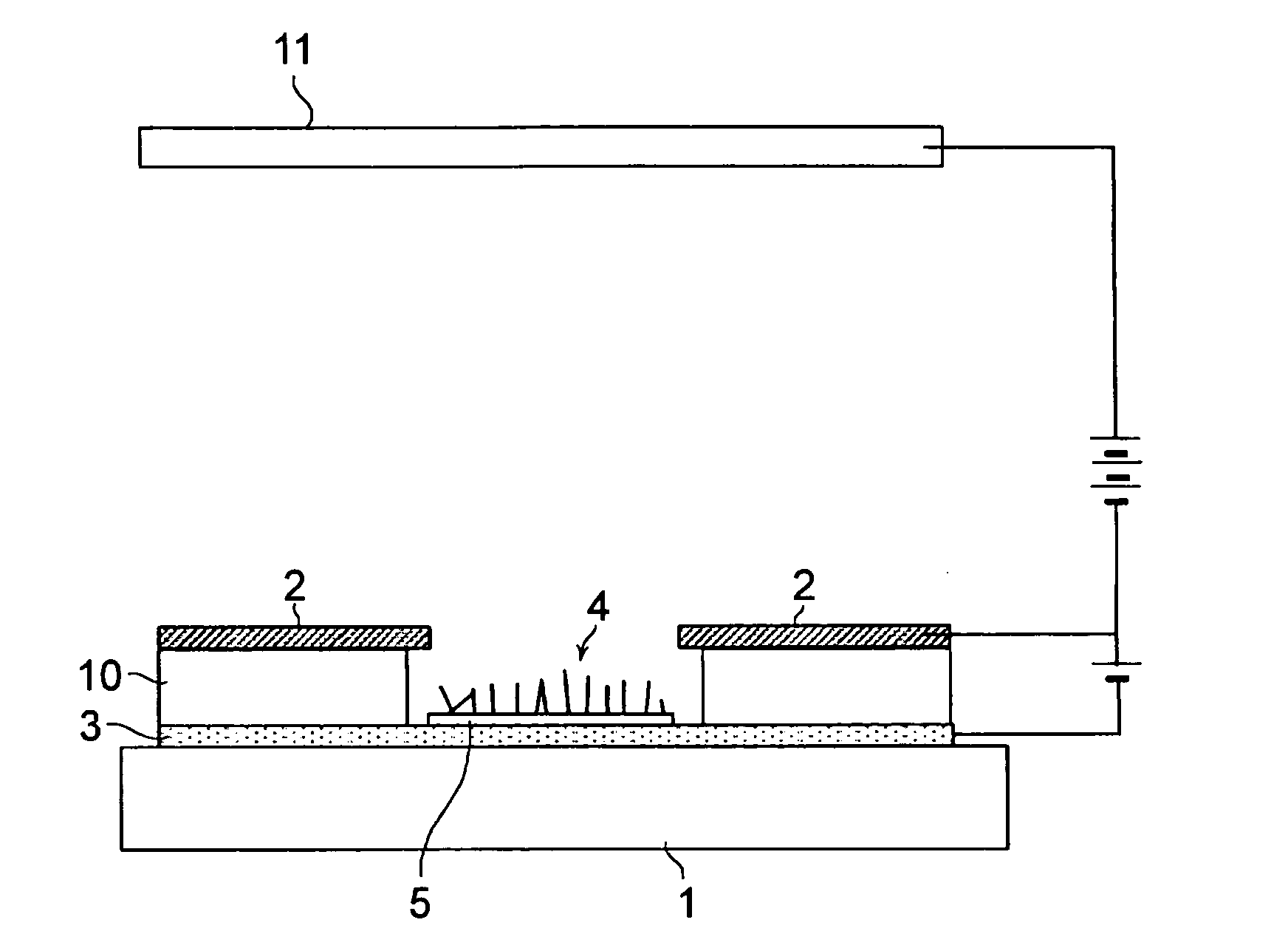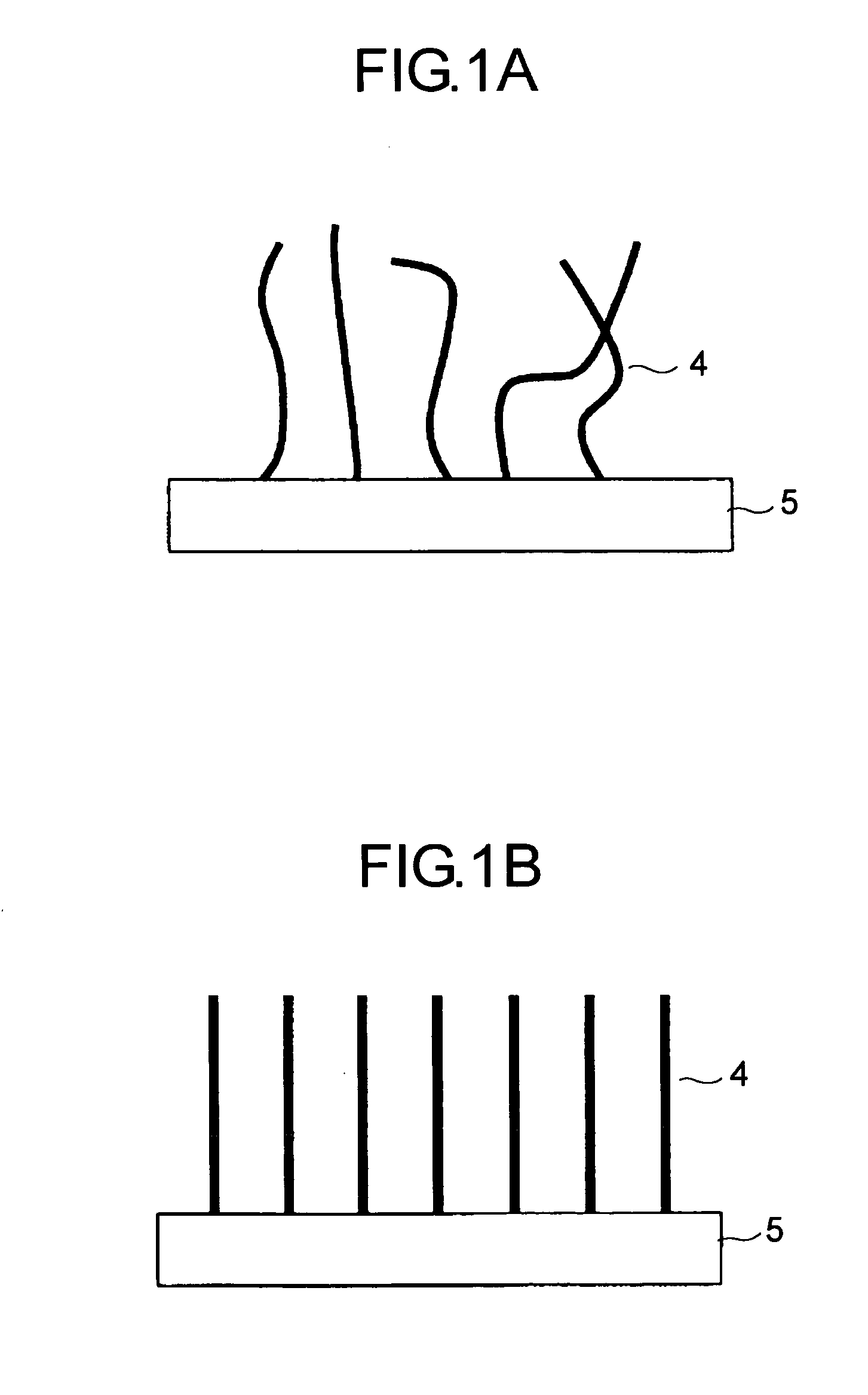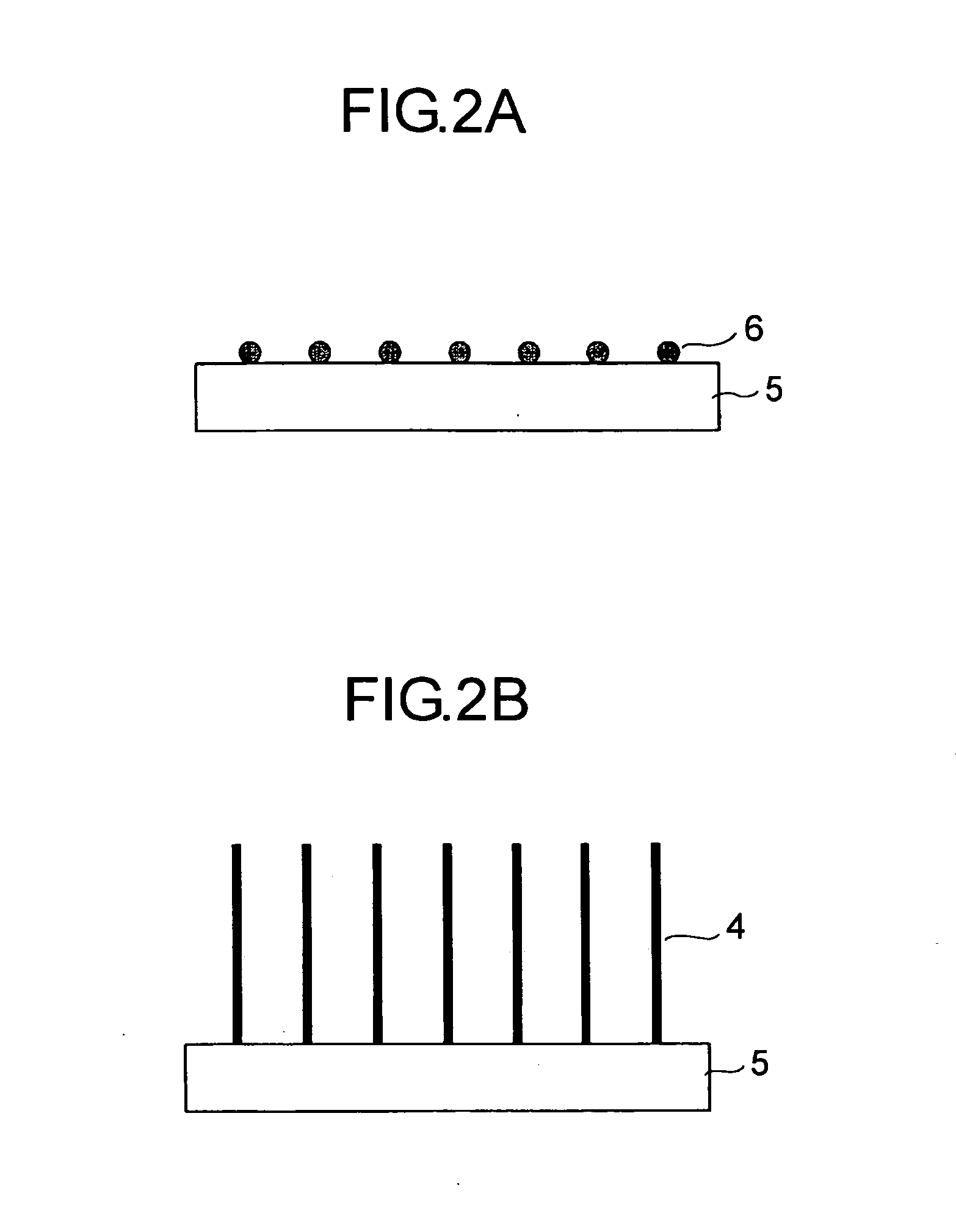Structure, electron emitting device, secondary battery, electron source, and image display device
a technology of electron emitting device and electron source, which is applied in the direction of discharge tube luminescnet screen, cell components, and discharge tube with screen, etc., can solve the problems of electron emission characteristics that are not stable, and achieve the effect of reducing the thickness of the oxide film formed
- Summary
- Abstract
- Description
- Claims
- Application Information
AI Technical Summary
Benefits of technology
Problems solved by technology
Method used
Image
Examples
example 1
[0116] In FIG. 3A is shown a view, when viewed from above, of an electron emitting device manufactured according to the present example and FIG. 3B is a sectional view taken on a line A-A in FIG. 3A.
[0117] In FIG. 3A and FIG. 3B, a reference numeral 1 denotes the insulating substrate, 2 denotes the control electrode (also referred to as a drawing-out electrode, or a gate electrode), 3 denotes the electrode (referred to as a cathode electrode), 4 denotes the plurality of carbon fibers, 5 denotes the conductive member made of a member material of the present invention.
[0118] The manufacturing process of the electron emitting device of the present example will be described by the use of FIG. 7.
(Step 1: refer to FIG. 7A)
[0119] A quartz substrate was used as a substrate 1. The substrate 1 was sufficiently cleaned and then Ti and Pt were vapor-deposited continuously in layer thicknesses of 5 nm (not shown) and 30 nm, respectively, on the substrate 1 by a sputtering method. Next, a re...
example 2
[0132] The construction of an electron emitting device according to an example 2 of the present invention is shown in FIG. 4A and FIG. 4B. Hereinafter, the differences in the manufacturing method between the example 1 and the example 2 will be described.
[0133] In the present example, in the step 1, the electrode 3 was formed in a thickness of 500 nm and the control electrode 2 was formed in a thickness of 30 nm. Moreover, in the step 2, Zr7Al3 was used as a target for sputtering. An analysis of the member 5 (ZrxAl(1−x)N (x3 was used a catalyst produced by adding approximately 20 atm % Co to metal Pd.
[0134] Even in the member 5 (ZrxAl(1−x)N (x4, which showed that a contact layer was stably formed. Moreover, the carbon fibers 4 could be stably grown by the alloyed catalyst.
example 3
[0135] The construction of an electron emitting device according to an example 3 of the present invention is shown in FIG. 5A and FIG. 5B. Hereinafter, the differences in the manufacturing method between the example 1 and the example 3 will be described.
[0136] In the present example, in the step 4, the member 5 and the metallic catalyst particles 6 were formed across the electrode 3 and the gap between the electrode 3 and the control electrode 2. The member 5 was formed nearly to a middle position (approximately half of the gap) between the electrode 3 and the control electrode 2. Moreover, in the present example, in the step 2, a target made of NbC (niobium carbide) was used as a target. An analysis of the member 5 (NbxC(1−x)N (x3, a catalyst produced by adding approximately 10 atm % Fe to metal Pd was used. Furthermore, in the step 5, 0.1% acetylene diluted with nitrogen was used as a gas for growing the carbon fibers.
[0137] Even in the member 5 (NbxC(1−x)N) of the present examp...
PUM
| Property | Measurement | Unit |
|---|---|---|
| diameter | aaaaa | aaaaa |
| diameter | aaaaa | aaaaa |
| diameter | aaaaa | aaaaa |
Abstract
Description
Claims
Application Information
 Login to View More
Login to View More - R&D
- Intellectual Property
- Life Sciences
- Materials
- Tech Scout
- Unparalleled Data Quality
- Higher Quality Content
- 60% Fewer Hallucinations
Browse by: Latest US Patents, China's latest patents, Technical Efficacy Thesaurus, Application Domain, Technology Topic, Popular Technical Reports.
© 2025 PatSnap. All rights reserved.Legal|Privacy policy|Modern Slavery Act Transparency Statement|Sitemap|About US| Contact US: help@patsnap.com



